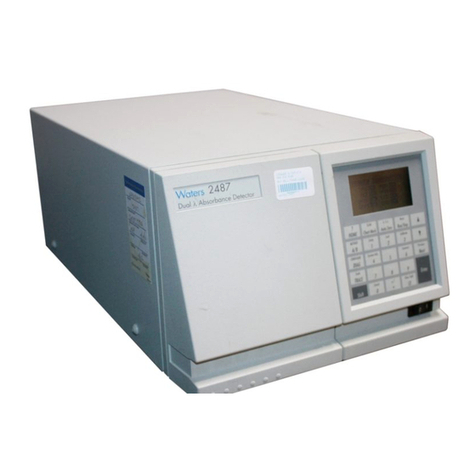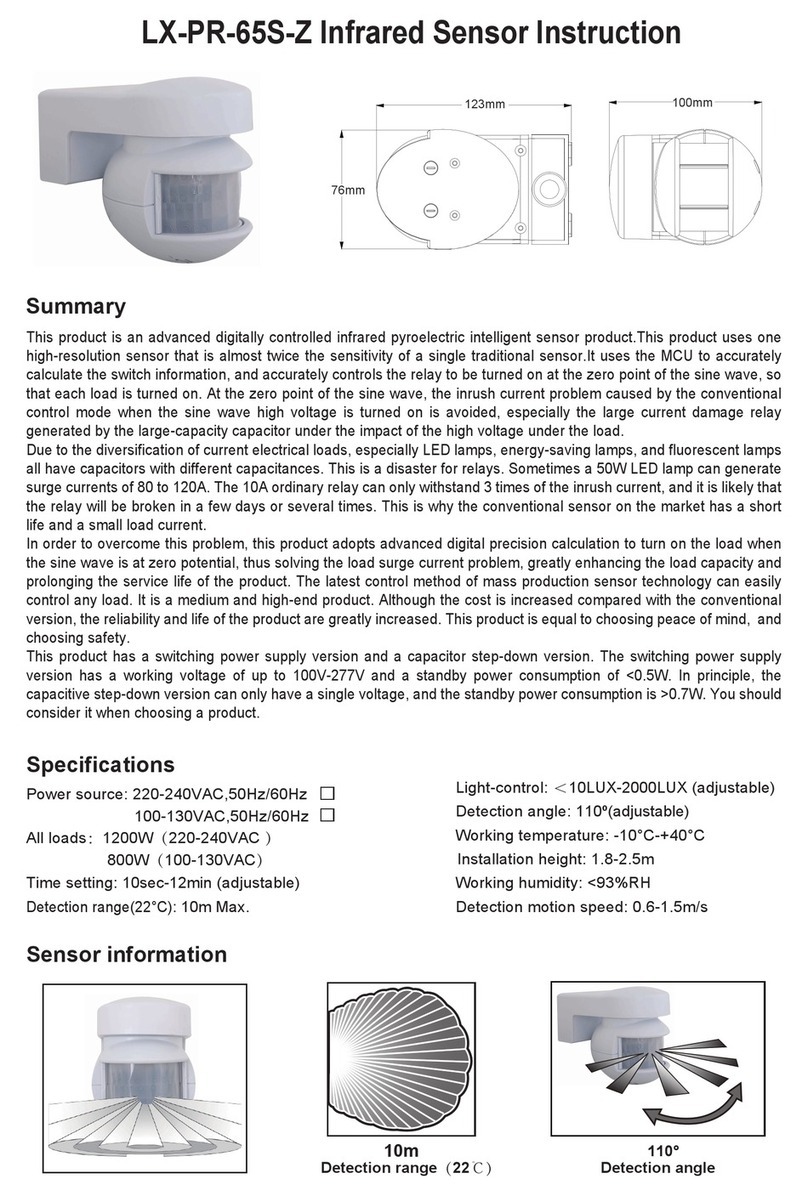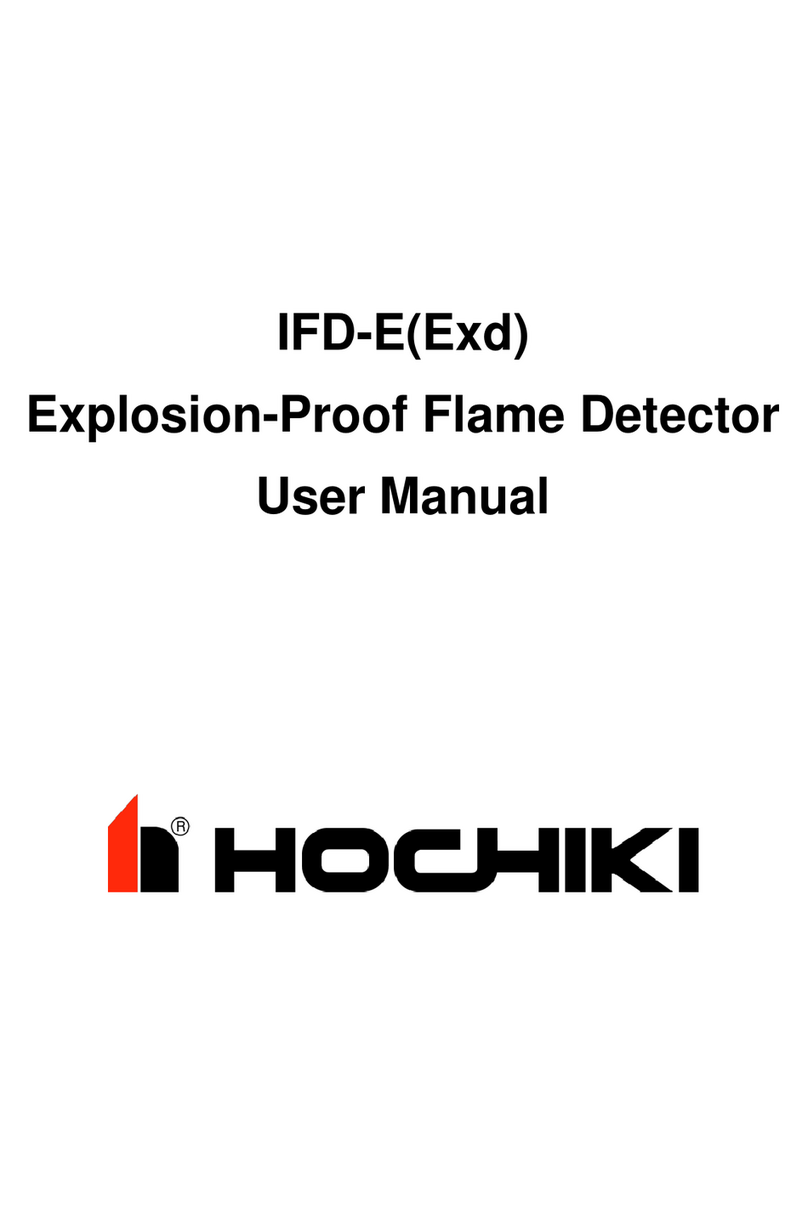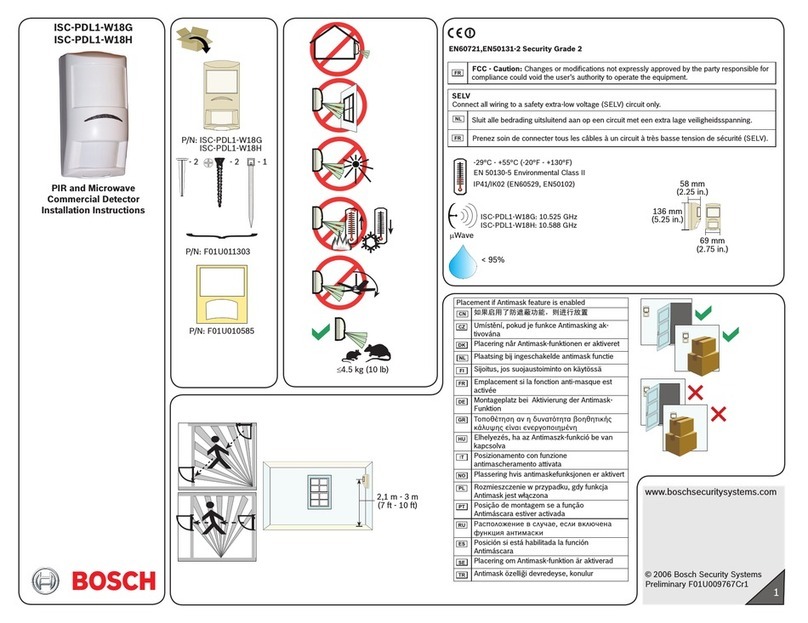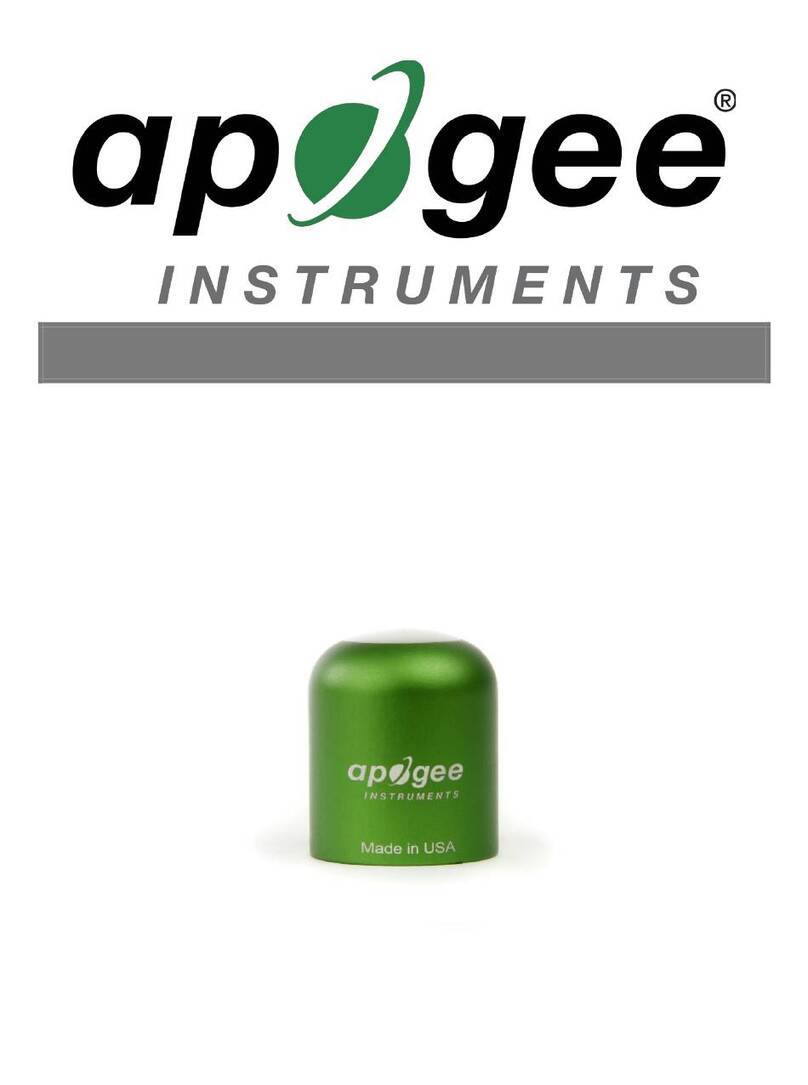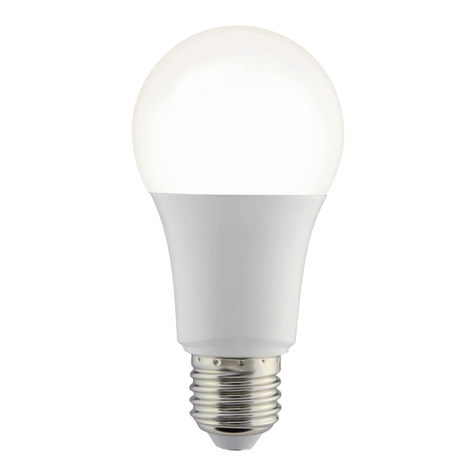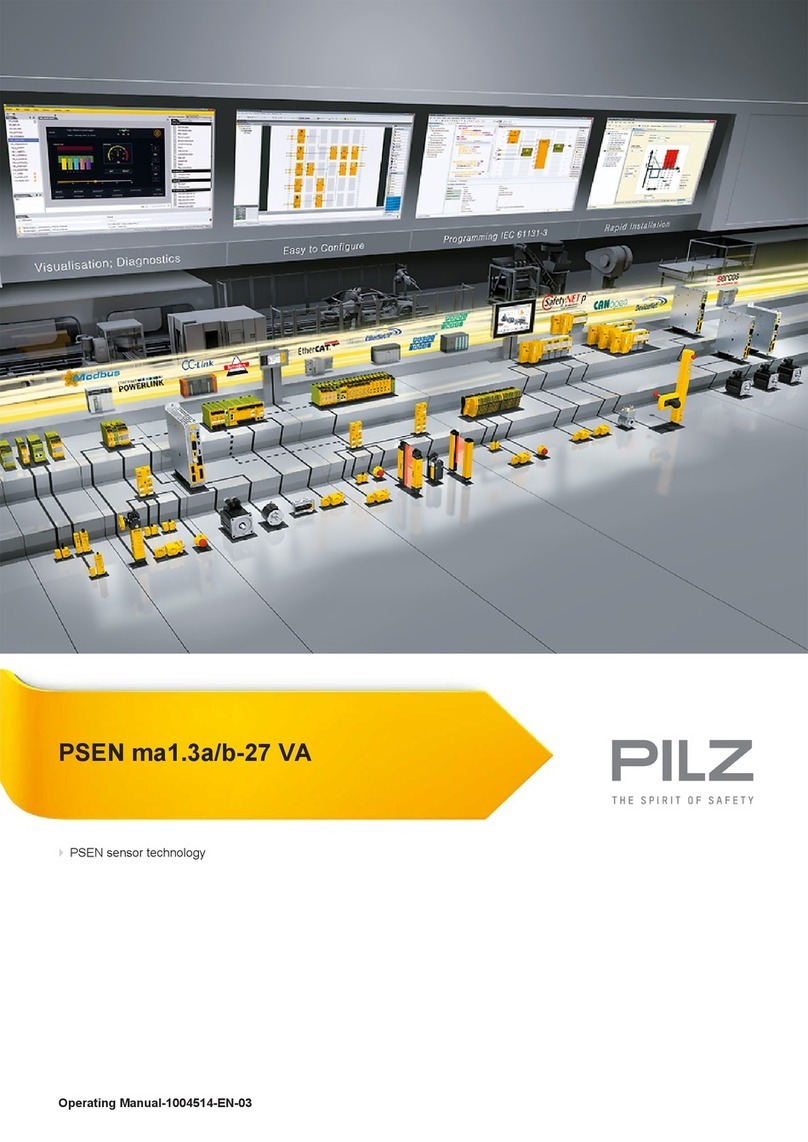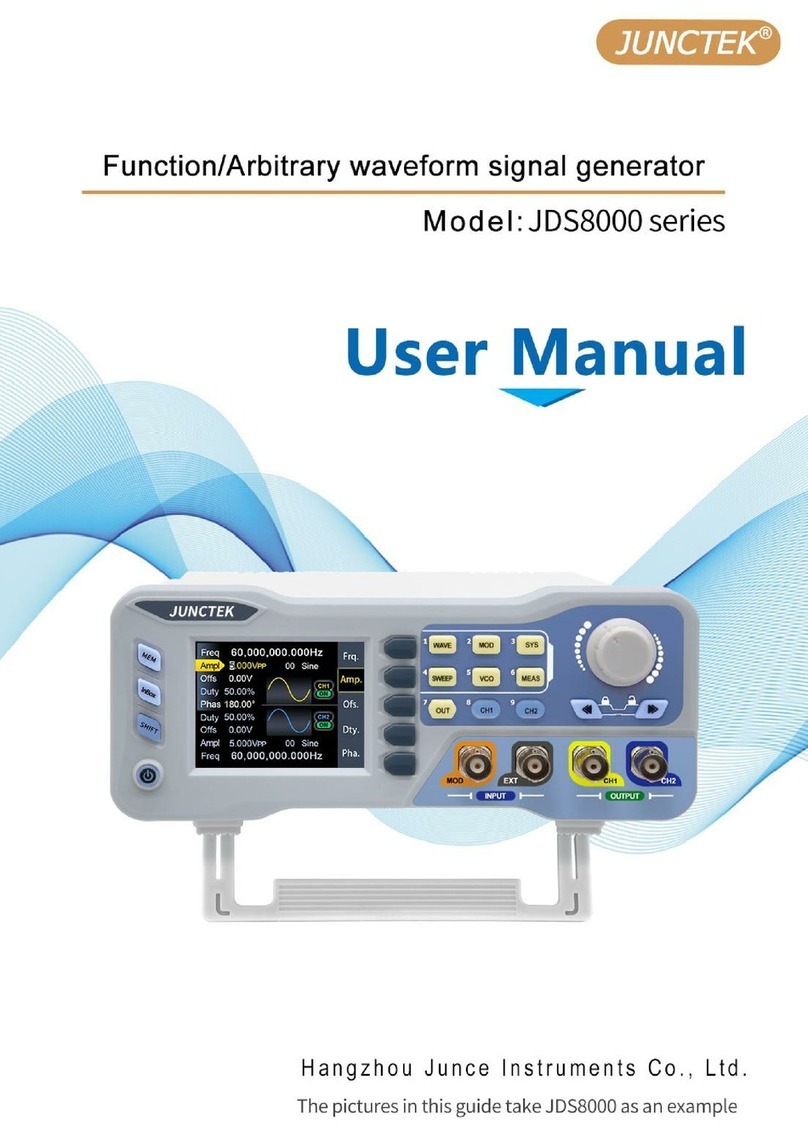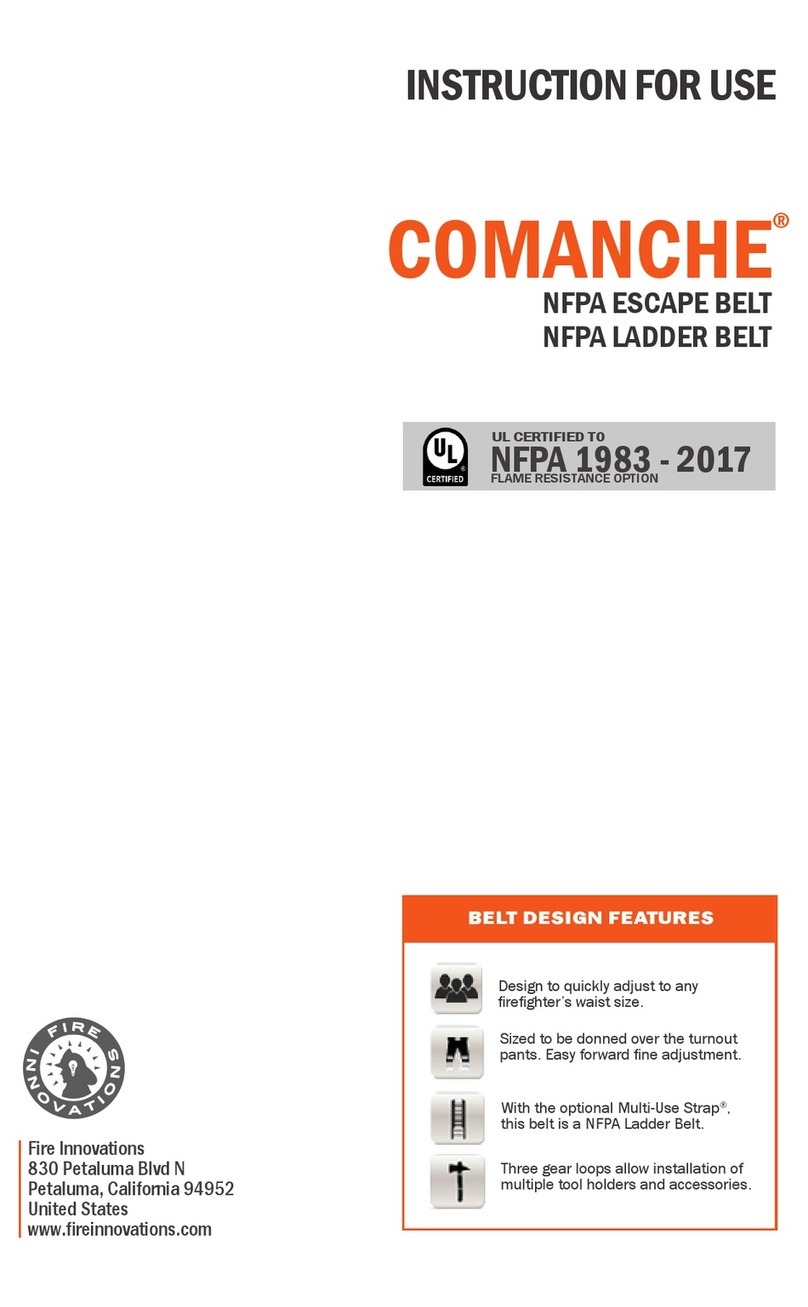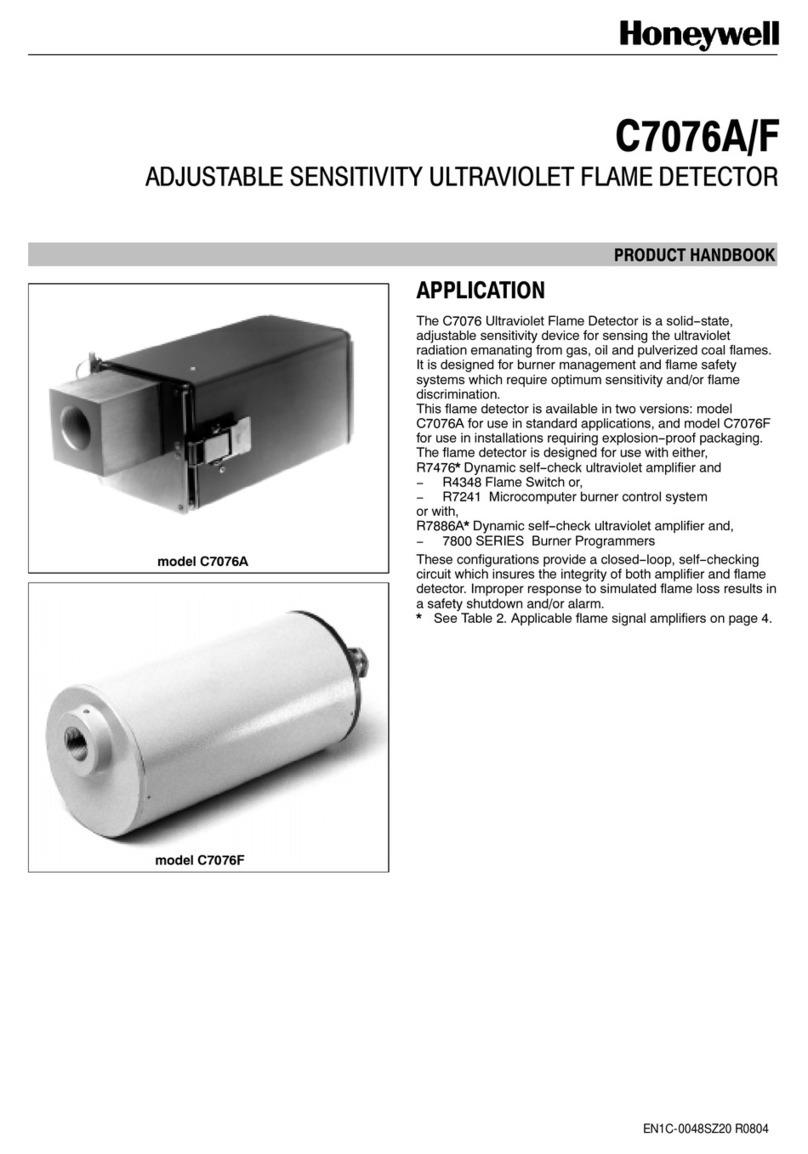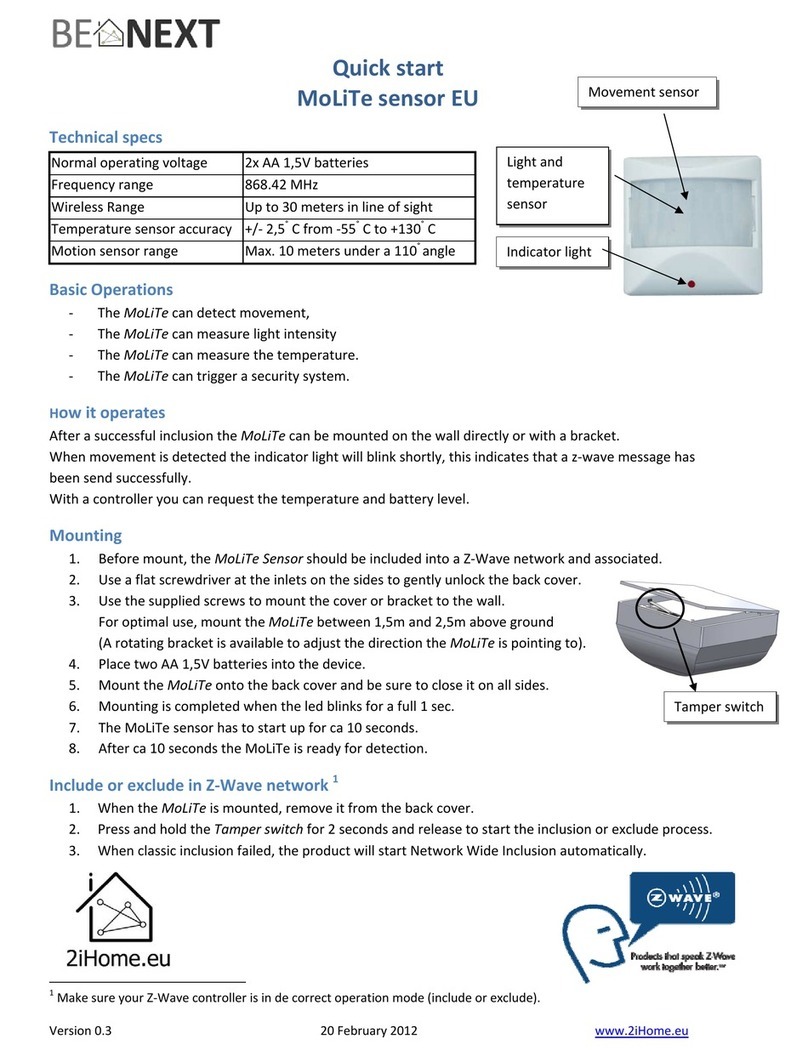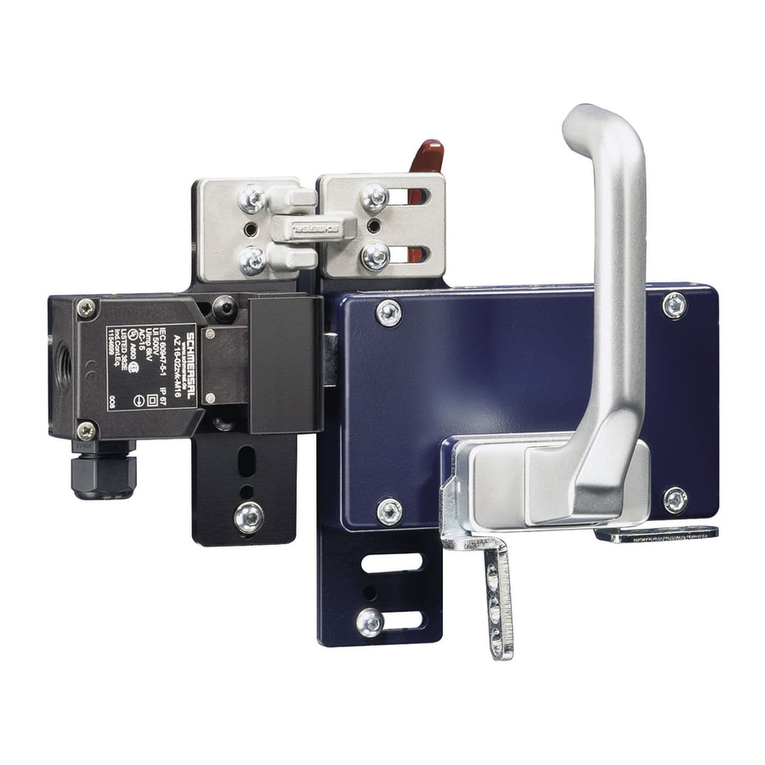Protecta AJ720A Operator's manual

1© Copyright 2004, DB Industries, Inc.
3965PepinAvenue
RedWing,MN55066-1837
TollFree:(800)328-6146 • Phone:(651)388-8282
Fax:(651) 388-5065 • www.protecta.com
WARNING:Thisproduct is partofa personal fallarrest or
restraintsystem.Theusermustfollow the manufacturer’s
instructionsforeachcomponentofthe system.These
instructionsmustbe provided totheuser of thisequipment.
Theusermustreadandunderstandthese instructions before
usingthisequipment.Manufacturer’sinstructionsmustbe
followedforproper use and maintenanceofthisequipment.
Alterationsor misuse ofthis equipment,or failure tofollow
instructions,mayresult in serious injuryordeath.
IMPORTANT: Recordthe product identificationinformation
fromthe ID label in theinspection and maintenancelog in
section8.0 of thismanual.
DESCRIPTIONS
The AJ720A Concrete Anchor consists of a steel anchorage plate with attached D-ring and four concrete insert
anchorage bolts.In use, the anchorage plate is mounted to a concrete surface (either vertical or horizontal) and secured
via the four included bolts.Once installed appropriately, the remainder of the personal fall arrest system (PFAS) is
attachedto the D-ring.
1.0 APPLICATIONS
1.1 PURPOSE:The AJ720A Concrete Anchorisdesigned to be usedasa permanentlyinstalled anchorageconnector
on concrete surfaces. It is designed to be used only as the anchorage connector for a single personal fall arrest
system. Do not attach a lifeline between two or more anchors (i.e. horizontal lifeline system), and do not hang, lift,
orsupport tools orequipment from theattached anchor.
1.2 FALL ARREST APPLICATION: For this application (as part of the“Compliance in a Can”personal fall arrest
system) the AJ720A Concrete Anchor is to be used as part of a complete fall arrest system.This system includes
a full body harness, rope lifeline, and rope grab with attached shock absorbing lanyard.This system is appropriate
for use where a free fall is possible before the fall is arrested. Maximum permissible free fall is 6 feet.
1.3 LIMITATIONS:The following application limitations must be recognized and considered before using this product:
A. STRUCTURES:The AJ720A ConcreteAnchor is intendedto be installedon structurescapable ofmeeting the
anchorage strength requirements as set forth in section 2.0, as well as the manufacturer’s instructions included
with the device (for anchorage bolts).Consult PROTECTA before using the AJ720A on any other structures.
B. CAPACITY:The AJ720A is designed for use by persons with a combined weight (person, clothing, tools, etc.) of
no more than 310 lbs. Only one personal fall arrest system may be connected to the AJ720A at one time.
C. PERSONAL FALL ARREST SYSTEM (PFAS): PFAS’s selected for use with this anchorage device must meet
the system performance and other criteria as stated in section 2.0.
User Instruction Manual AJ720A Concrete Anchor
This manual is intended to meet the Manufacturer’s Instructions as required by ANSI Z359.1, ANSI A10.14, and the
Canadian Standards Association, and should be used as part of an employee training program as required by OSHA
Figure 1 - Concrete Anchor Plate and Bolts

2
D. FREE FALL: Personal fall arrest systems must be rigged in such a way as to limit the free fall to a maximum
distance of six (6) feet (Ref. ANSI Z359.1-1992).
E. FALL CLEARANCE: Make certain that enough clearance exists in your fall path to prevent striking an object.
The amount of clearance needed is dependent on the subsystem in use and the anchor location.
F. CORROSION/EXPOSURE: Usenearseawater or in other corrosiveenvironmentsmayrequiremore frequent
inspections or servicing (replacement) to assure that corrosion or other exposure damage is not affecting
performanceofthe product.
G. CHEMICAL HAZARDS: Solutions containing acids, alkali, or other caustic chemicals, especially at elevated
temperatures, may cause damage to this equipment.Consult PROTECTA if doubts exist concerning installation
ofequipmentwhere chemical hazards arepresent.
H. ELECTRICAL HAZARDS: Do not install the AJ720A where it or the user may come into contact with electrical
powerlines.
I. TRAINING:This equipment isintendedto be installedandused bypersonswho have beenproperly trainedin
its correct application and use.
2.0 SYSTEM REQUIREMENTS
2.1 ANCHORAGE STRENGTH: Forfallarrestapplications,theanchoragepointatwhich the AJ720A ConcreteAnchor
is installed must meet minimum strength requirements. Strength requirements for fall arrest devices and systems
areoutlinedbelow.
2.2 FALL ARREST REQUIREMENTS: Anchorage devices installed for fall arrest applications must be attached to a
structural member capable of sustaining static loads in the direction(s) permitted by the PFAS when in use of at
least:(A) 3,600 lbs.(16 kN) where certification exists (reference ANSI Z359.1-1992 for certification definition), or
(B) 5,000 lbs.(22.2 kN) in the absence of certification.When more than one anchor is installed to a structure, the
strengths given in (A) or (B) above must be met at each anchor installation point independently.EXAMPLE:If two
anchors are installed on to a roof structure, each anchor must be independently capable of supporting 5,000 lbs.(or
3,600 lbs.with certification).
3.0 USE AND OPERATION
WARNINGS: Do notalterorintentionally misuse thisequipment.Consult PROTECTA when usingthisequipmentin
combinationwithcomponentsor subsystems otherthanthosesuppliedwith the productorthosedescribedin this
manual.Somesubsystemand component combinations mayinterferewiththeproper operation ofthisequipment.Use
cautionwhenusingthisequipmentaroundmoving machinery and electrical hazards. Usecautionwhenusingthis
equipmentaroundsharpedges and chemicalhazards.Consultyourdoctor if there isanyreasonto doubt your fitnessto
safely absorbtheshockfrom afall arrest.Age and fitnessseriouslyaffecta worker’s abilityto withstand falls.Pregnant
womenorminors mustnotuse PROTECTAfallprotectionequipment.
3.1 BEFORE INSTALLATION of this equipment, carefully inspect it to ensure that it is in serviceable condition.Check
for missing or damaged parts.D-ring, plate, and bolts should be free from corrosion.Nuts should be tightened to
required torque (see section 3.0). Refer to section 5.0 for more details. Do not use if inspection reveals an unsafe
condition.
3.2 PLAN your fall arrest or restraint system before starting your work.Take into consideration factors affecting your
safety at any time during use.The following list gives some important points you must consider when planning your
system.
3.3 ANCHORAGE: Selectananchoragepointthat is rigidandcapableofsupporting the required loadsandin the
properlocation.
3.4 FREE FALL: Personal fall arrest systems must be rigged to limit any free fall to a maximum of six (6) feet (OSHA
and ANSI Z359.1-1992).Restraint systems must be rigged so that NO vertical free fall is possible.Avoid working
above your anchorage level as increased free fall distance will result.

3
3.5 PERSONAL FALL ARREST SYSTEM REQUIREMENTS: PFAS’s used with this roof anchor must meet applicable
OSHA(stateand federal) and ANSIrequirements(“Compliancein a Can components meettheserequirements).
PFAS’s incorporating a full body harness must be capable of arresting a person’s fall with a maximum arresting
force of no greater than 1,800 lbs., and limit the free fall distance to six (6) feet or less.The deceleration distance
for a PFAS must be 42 inches (1.1M) or less.Reference ANSI Z359.1-1992 and OSHA 1926 requirements.
3.6 RESTRAINT SYSTEMS: Restraint systems must meetapplicablestate and federalrequirements.Reference ANSI
A10.14-1991.The“Compliance in a Can”kit is not designed to be used as a restraint system-only for fall arrest.
3.7 FALL CLEARANCE: Should a fall occur, there must be sufficient clearance in the fall area to arrest the fall before
striking the ground or other object(s).The actual clearance required is dependent upon the type of fall arrestor
connecting the subsystem used (i.e. the shock absorbing lanyard/rope grab combination, or a self retracting
lifeline).Refer to instructions included withdecelerationdevice elements when determiningminimumclearances.
3.8 SWING FALLS: Swing falls occur when the anchor location is not directly above the point where a fall occurs.The
force of striking an object while swinging can be great and may cause serious injury.Swing falls can be minimized
by working as directly below the anchorage as possible.
3.9 SHARP EDGES: Avoid working where the connecting subsystem (i.e.shock absorbing lanyard, full body harness,
etc.) or other system components will be in contact with, or abrade against unprotected sharp edges. Do not loop
lanyardaround small diameter structuralmembers.If working with thisequipmentnear sharp edgesisunavoidable,
protection against cutting must be provided by using a heavy pad or other means over the exposed sharp edge.
3.10RESCUE: Should a fall occur, the employer must have a rescue plan and the means to implement it in place.
3.11AFTER A FALL: Any equipment which has been subjected to the forces of arresting a fall must be removed from
service immediately and destroyed, or contact PROTECTA for repair or recertification information.
3.12 ANCHORLOCATION:
Anchorplates(AJ720A)
must be located at
structurally sound points in
accordancewiththe
previously discussed
systemrequirements (see
section 2.0). Holes for the
anchor must be at least 4
inchesfrom any free edge.
Whenmorethanone
AJ720AConcrete Anchor is
mountedonananchorage,
they must be separated by
at least 10 inches. See
Figure2.
NOTE: It isrecommended that theholes be drilled and thebolts installedwith the anchorplate in place,usingtheplate
asa guide tokeep thedrill from wandering.
3.13INSTALLINGTHE ANCHOR: Anchor installationrequiresthat holes be drilled intothe concrete surfaceandthe
included anchor bolts inserted and affixed:See Figure 3.
STEP 1. Using a ½in. carbide drill bit, drill each hole a minimum of 3 ¾in. deep. Clean out the holes
witha blow-outbulborcompressedair.
STEP 2. Assemble the washer and nut onto the bolt. Screw the nut onto the bolt until it is flush with the
top of the bolt to protect the threads. Place the bolt through anchor plate and into the hole. Drive the bolt
into the hole until the washer is pressed against the surface of the anchor plate.
STEP 3. Expand the anchor bolt by tightening the bolt to the installation torque of 55 ft. lbs. Minimum
embedmentin concrete: 2¼in.
Figure 2 - Anchor Locations

4
WARNING:Alwayswearsafetyglasses andother
necessaryprotectivedevicesorapparelwheninstalling
orworkingwithanchorbolts.
CAUTION:Notrecommendedfor useinlightweight
masonrysuchasblockorbrick.
CAUTION: Useofcarbidedrillbitsmanufacturedwithin
ANSIB94.12-77 drill bitdiameterrequirements is
recommendedfor installation of thisanchorbolt. Use of
coredrills is notrecommended to drillholesfor use with
thisanchor.
CAUTION:Notrecommendedforuseinnewconcretewhichhasnot had sufficienttimetocure.
WARNING: Usermustreadandfollowthesuppliedinstructions(orinstructionssuppliedwith non-supplied equipment) for
theassociatedequipment used inthiskit(i.e.fullbodyharness,shock absorbing lanyardwith attached rope grab, and
ropelifeline).Failure toread and followallinstructions could resultinseriousorfatalinjury.
IMPORTANT:Forspecial(custom) versionsofthis product, followtheinstructions herein (i.e.Compliance in aCan).If
enclosed,seeattachedsupplementforadditionalinstructionstobefollowedwhenusingacustomizedproduct.Ifinstructions
forany componentofthe system aremissing or unusable,contactPROTECTAforareplacementset beforeuse.
3.14MAKING CONNECTIONS:When using ahooktomakeaconnection,becertainaccidentaldisengagement (rollout)
cannot occur. Rollout occurs when interference between a hook and the mating connector causes the hook’s gate
or keeper to accidentally open and release. Self-locking snap hooks and self-closing and locking carabiners must
be used to reduce the possibility of rollout when making connections. Do not use hooks or connectors that will not
completely close over the attachment object. Never use non-locking snap hooks. Follow supplied instructions for
each system component.
3.15CONNECTINGTOTHE CONCRETE ANCHOR: Connection to theinstalledconcreteanchor maybemadeusinga
self locking snap hook or self closing carabiner ONLY. Do not use a knot to connect a lifeline to the concrete
anchor. Do not pass lanyard or lifeline through the anchor ring and hook back into lanyard or line. When
connecting, make sure connections are fully closed and locked. When using a shock absorbing lanyard (SAL),
ensure that the shock absorber end of the lanyard is connected closest to the dorsal D-ring of the harness (does
not apply to “Compliance in a Can”kit as the SAL is permanently attached to rope grab). If using a self retracting
lifeline, make sure device is properly positioned so that retraction is not hindered. Always protect lifeline/lanyard
from contact against sharp edges or abrasive surfaces. Make sure all connections are compatible in size, shape,
and strength. Never connect more than one personal fall arrest system to any single concrete anchor at a time.
WARNING: Usermustreadandfollowthesuppliedinstructions(orinstructionssuppliedwith non-supplied equipment) for
theassociatedequipment used inthiskit(i.e.fullbodyharness,shock absorbing lanyardwith attached rope grab, and
ropelifeline). Failure toread and follow all instructions could resultin seriousor fatalinjury.
IMPORTANT: Forspecial (custom) versionsofthisproduct,follow the instructions herein (i.e.Compliancein a Can). If
enclosed,seeattached supplement foradditionalinstructionsto be followedwhenusinga customized product. If
instructionsforany componentofthesystemaremissingorunusable,contactPROTECTAforareplacementsetbeforeuse.
1. Drill and clean
hole. 2. Drive assembled
bolt into hole. 3. Tighten to
appropriate torque.
Figure 3 - Installing Anchor Bolts

5
4.0 TRAINING
4.1 It is the responsibility of the user and purchaser of this equipment to ensure that they are familiar with these
instructions, trained in the correct care and use of, and are aware of the operating characteristics, application limits,
and the consequences of improper use of this equipment.
IMPORTANT:Trainingmustbeconductedwithout exposingthetraineetoa fallhazard.Trainingshouldbe repeated ona
periodicbasis.
5.0 INSPECTION
IMPORTANT:Ifthis equipmenthas been subjected to forcesresulting fromthe arrest of a fall, itmustbe immediately
removedfromserviceanddestroyed.
5.1 FREQUENCY: Before use, visually inspect the anchor per the following steps:
STEP 1:Inspect the D-ring, plate, and bolts for physical damage. Look carefully for any signs of cracks, dents, or
deformitiesin the D-ring.Ensurethat nutsare tightened topropertorque per manufacturer’s instructions.
STEP 2:Inspect the D-ring, plate, and bolts for signs of corrosion.
STEP 3:Ensure that the condition of the structure will support the anchor loads (see“Anchorage Strength
Requirements”).Ananchor connected to questionablematerialor surfaces should notbeused.
STEP 4:Ensure that the anchor is securely attached at all times.
STEP 5:Inspect each system component or subsystem per written instructions from manufacturer (inspection
procedures for other elements of the “Compliance in a Can”kit are included in this manual).
STEP 6:Record the inspection date and results in the inspection log included in the back of this manual.
NOTE:Ifinspection reveals adefective condition,removethe unit fromserviceimmediatelyand destroy, or contact
PROTECTAfor moreinformation.OnlyPROTECTAisauthorized to makerepairstothisequipment.
6.0 CLEANING, MAINTENANCE, AND STORAGE
6.1 No scheduled maintenance is required. If you have any questions concerning the condition of your AJ720A
Concrete Anchor, or have any doubts about putting it into service, contact PROTECTA.Additional maintenance and
servicing procedures (i.e.replacement parts) must be completed byPROTECTA.Unused components must be
stored in a clean dry location.
7.0 SPECIFICATIONS
7.1 ANCHORPLATE ANDD-RING
MATERIAL: Zincplatedstamped steel D-ring.Paintedsteelplate.
MINIMUM BREAKING STRENGTH: 5,400lbs.minimum
WEIGHT: 3lbs.(including anchor bolts)
SIZE: 6 in. X 6 in. X 1/4 in. steel plate, 9/16 in. diameter holes, 4 in. X 1/2 in. diameter anchor bolts.
CAPACITY: 310 lbs.total (oneperson,clothing,equipment).
7.2 ANCHORBOLTS
LENGTH:3.75IN.
DIAMETER: .50IN
SPECIFICATIONS: Meets GSA Specification FF-S-325, Group II,Type 4, Class 1.
ASTM E488.

6
AnchorPlate AnchorBolt
7.3 DIMENSIONS:

7
ETADNOITCEPSNISMETINOITCEPSNI DETON NOITCAEVITCERROCECNANETNIAM DEMROFREP
:yBdevorppA
:yBdevorppA
:yBdevorppA
:yBdevorppA
:yBdevorppA
:yBdevorppA
:yBdevorppA
:yBdevorppA
:yBdevorppA
:yBdevorppA
:yBdevorppA
:yBdevorppA
8.0 INSPECTION AND MAINTENANCE LOG
DATEOFMANUFACTURE:_______________________________________________________________________
MODELNUMBER: ______________________________________________________________________________
DATEPURCHASED: ________________________________________________________________________________

8
USA Canada
3965 Pepin Avenue 260 Export Boulevard
Red Wing, MN 55066-1837 Mississauga, Ontario L5S 1Y9
Toll Free: 800-328-6146 Toll Free: 800-387-7484
Phone: (651) 388-8282 Phone: (905) 795-9333
Fax: (651) 388-5065 Fax: (905) 795-8777
www.protecta.com www.protecta.com
Form:5902241
Rev:A
I S O
9 0 0 1
Certificate No. FM 39709
Table of contents
Other Protecta Security Sensor manuals

Protecta
Protecta Standing Seam Roof Anchor Operator's manual
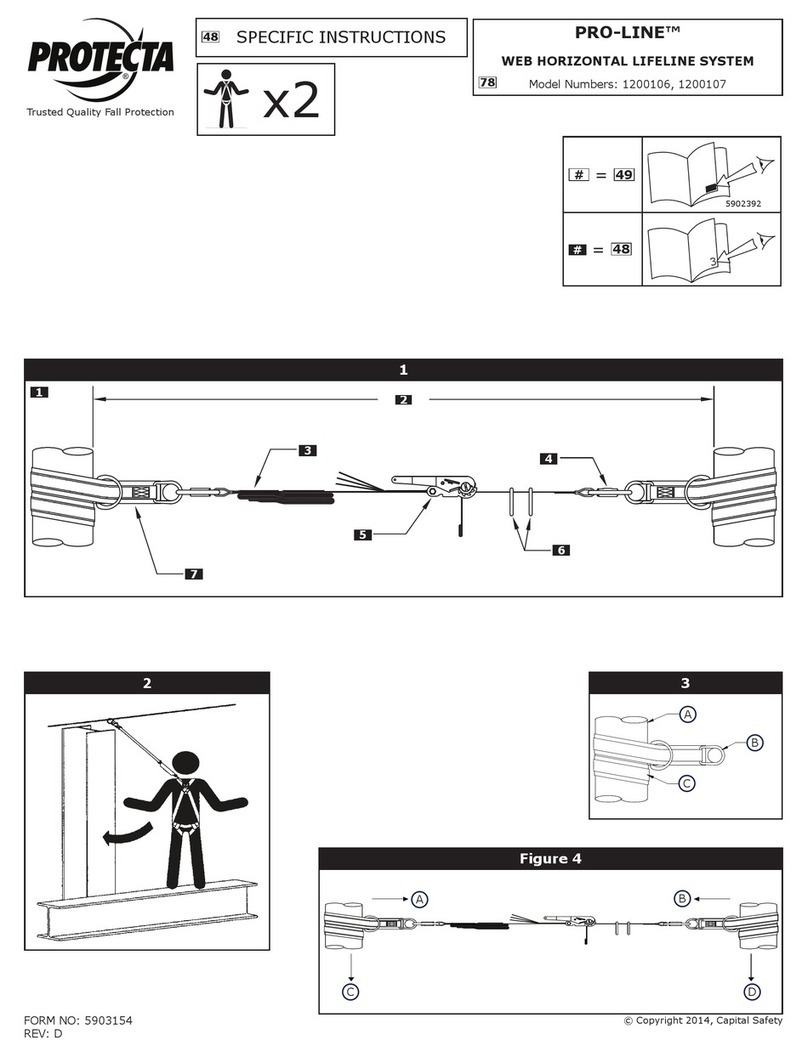
Protecta
Protecta PRO-LINE 1200107 User manual
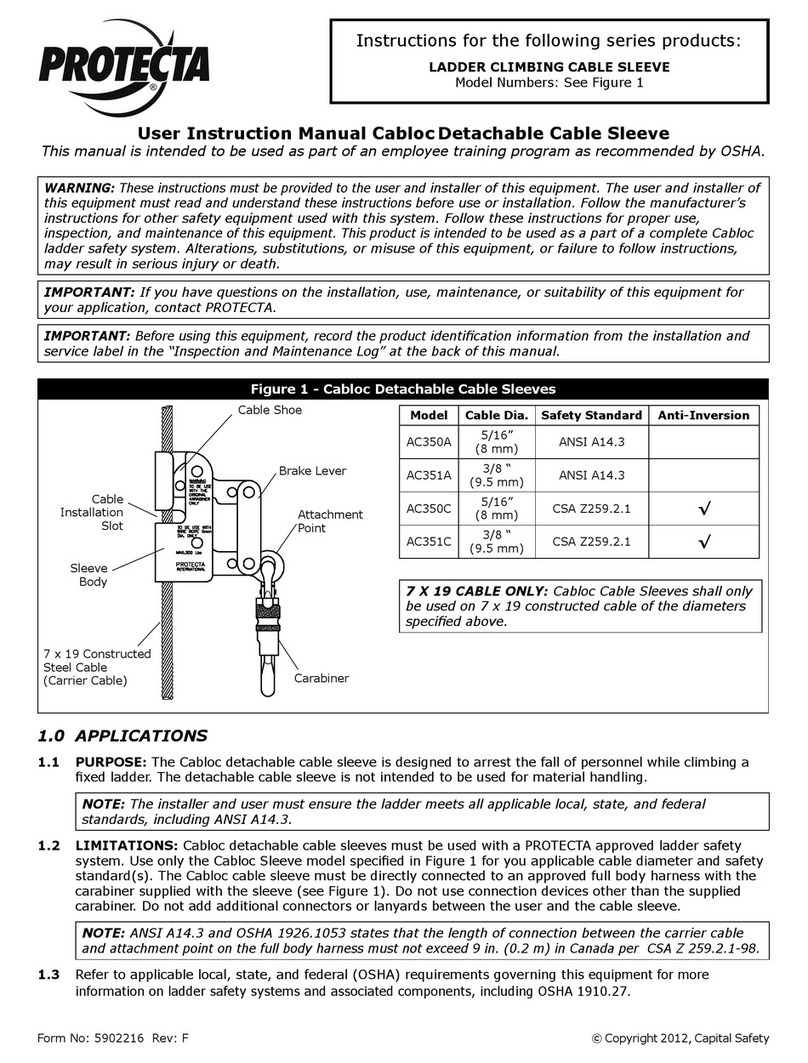
Protecta
Protecta AC350A Operator's manual
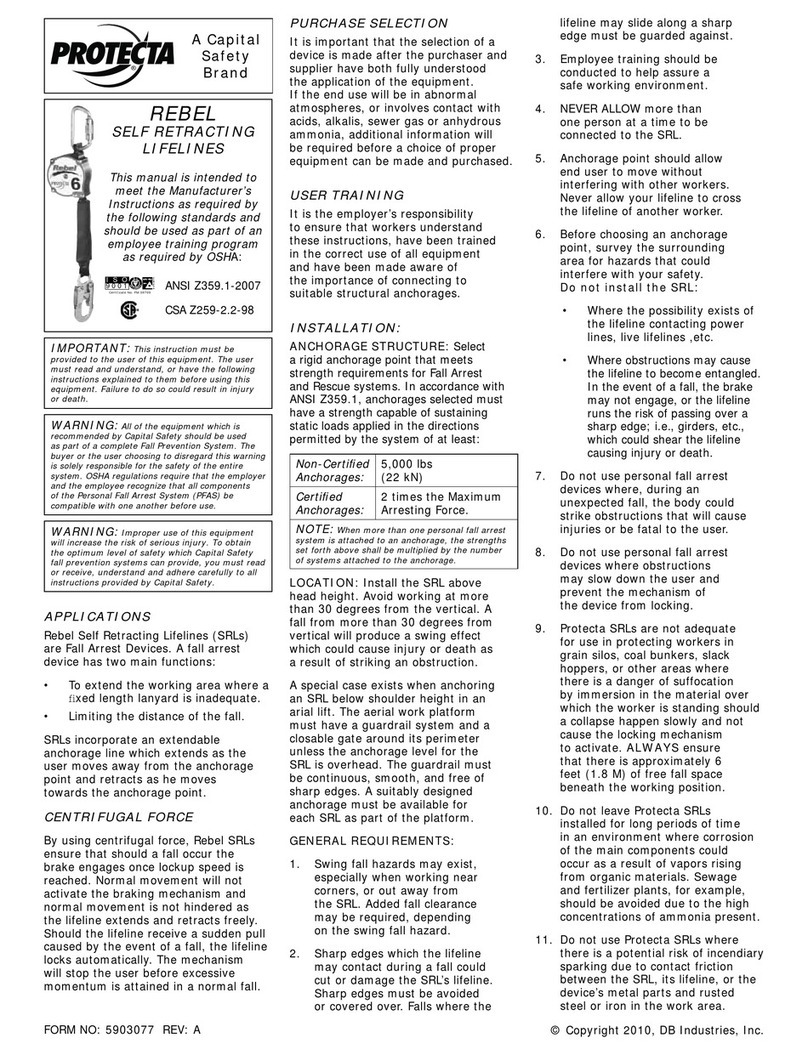
Protecta
Protecta REBEL User manual
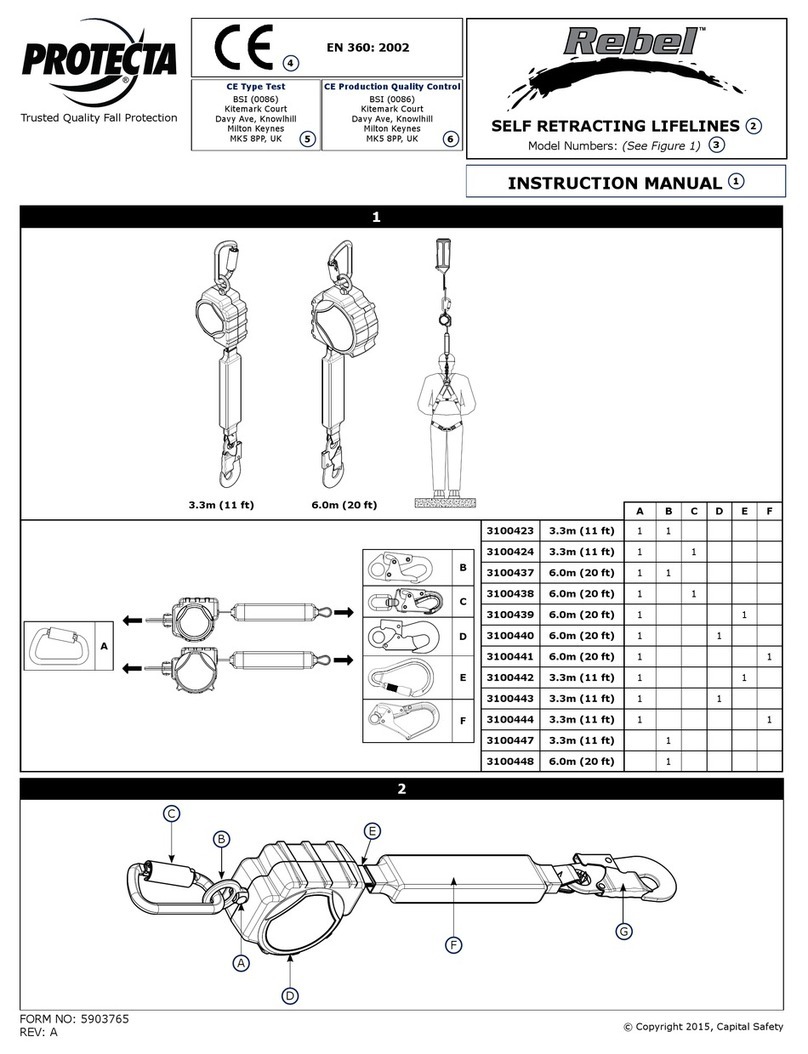
Protecta
Protecta Rebel 3100423 User manual
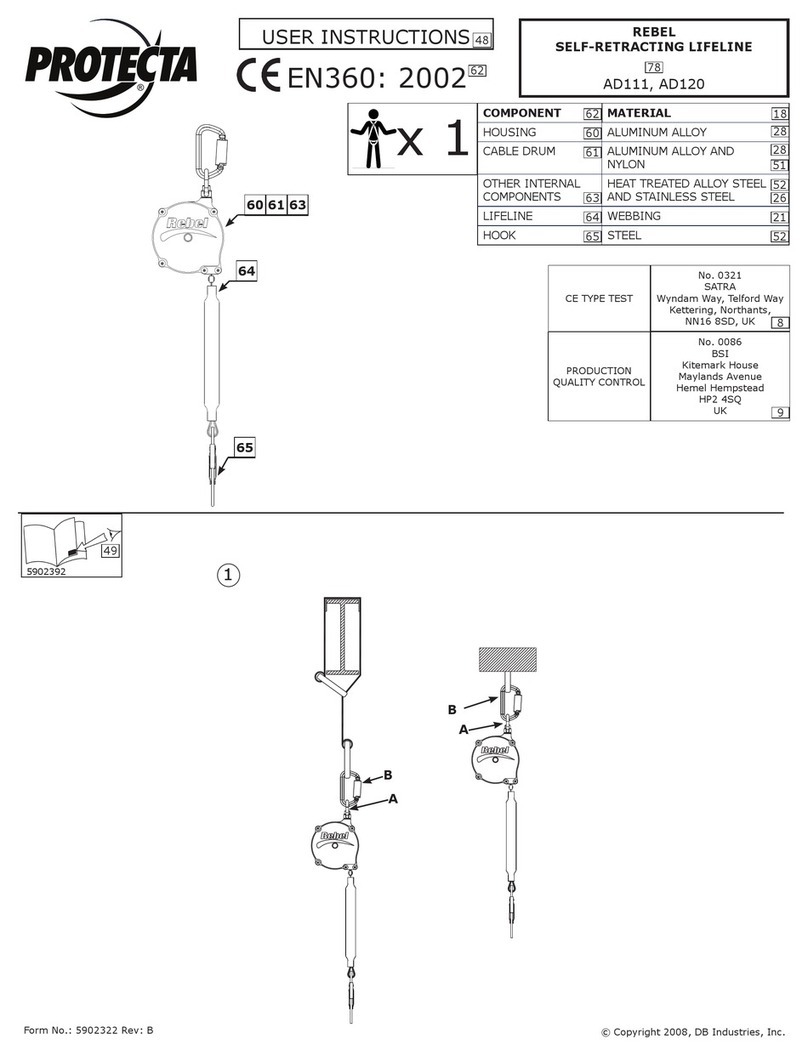
Protecta
Protecta REBEL AD111 User manual
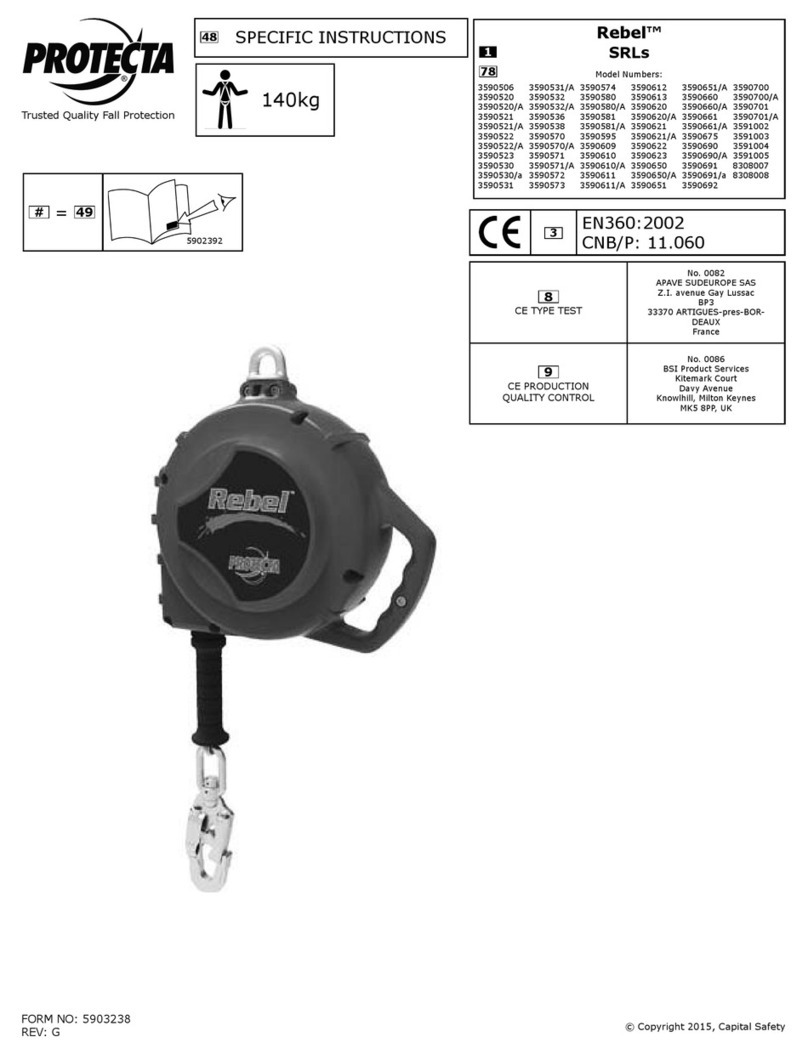
Protecta
Protecta Rebel Series User manual
